
Nick Cave & The Magical Fabrique
Nick Cave and the Bad Seeds spent three weeks with Nick Launay recording in luxury in the French countryside, before holing up in Los Angeles’ Seedy Underbelly to mix the beautifully honest album Push The Sky Away.
Cover Image: Cat Stevens
Launay was talking about Nick Cave and the Bad Seeds’ 15th album Push The Sky Away. And considering the producer, mixer and engineer has worked on albums for Public Image Ltd, Midnight Oil, Kate Bush, David Byrne, INXS, Eric Clapton, Lou Reed, Arcade Fire, and more, for him to say that the response to Push The Sky Away has been stronger than any other album he’s been involved with is a big statement. But with a Metacritic rating of 8.2 out of 10, and reaching No. 1 in close to a dozen countries, he’s backed up by overwhelmingly favourable critical and public sentiment. Even the US is starting to bend to Cave’s charm, with the album hitting No. 29 on the Billboard charts. “People appear almost overwhelmed by it,” continued Launay. “I’m noticing women especially love it. The whole idea was to make a very touching and beautiful album. Not only does it sound organic and warm, with loops, squeaks, buzzes and hums deliberately kept in, its stories are told in an unusual way and with an incredible sense of humour, making the album very entertaining. In fact, every album I do with them is getting wilder and more unusual.”
Outstanding albums don’t always have outstanding making-of stories, nor does an exceptionally inspired production process necessarily lead to great results, but as Launay related the story of the writing, recording, and mixing of the album, there were enough hints, details and anecdotes to at least partially explain Push The Sky Away’s greatness.
FANTASTIQUE FABRIQUE
The London-born Launay first worked with Nick Cave right at the beginning of his studio career, in 1981, on a single for the Australian’s post-punk band The Birthday Party. The two re-united in 2002 when Launay recorded, mixed and produced Nick Cave and the Bad Seeds’ album Nocturama (2003). Since then the band lost a founding member with every album: Blixa Bargeld was no longer there for Abattoir Blues/The Lyre of Orpheus (2004) and Mick Harvey left before Dig, Lazarus, Dig!!! (2008), but Launay, as producer, remained a constant. Launay and Cave also worked together on two albums by Grinderman, Grinderman (2007) and Grinderman 2 (2010). Push The Sky Away is by far the most introverted and atmospheric of the albums Cave and Launay have worked on together. It wasn’t exactly planned that way, but when the ensemble decamped to La Fabrique studios in the French countryside, surrounded by gorgeous grounds, a pool, wine and good food, the soothing effect of these environmental anodynes conspired to bring out something far more filmic and expansive than anything they had previously done.
“The environment definitely helped,” agreed Launay. “One thing that also played a part was that Nick and Warren [Ellis, multi-instrumentalist] have been doing quite a bit of film music in recent years, so they’ve been breaking down the whole rock approach of music needing to have a drumbeat with a snare on two and four. I’ve also been doing some film music, so we all recognised that the most important thing is the way music makes people feel.
“Nick also had fantastic words, poems, stories to tell and feelings to share, many of which were written before the music existed, so the process was a matter of everyone trying to find the right music for the lyrics. This contrasted with the way previous Bad Seeds albums were done, with most of the songs written by Nick before the recordings, and the band rehearsing, then recording them very fast in the studio. Whereas The Grinderman records started with the band jamming, messing with sounds and loops, then Nick writing lyrics to that — the exact opposite of the way Push The Sky Away came into being.
“Each of Nick’s albums have a different feel. Dig, Lazarus, Dig!!! was recorded in four days at Terry Brittan’s State of the Ark Studios in London — incredibly fast by anyone’s standards. Abattoir Blues/The Lyre of Orpheus was recorded in Studio Ferber in Paris — a fantastic studio that absolutely affected the way that record sounds. And there was a deliberate idea behind the making of Push The Sky Away. I was asked to look for a residential studio in the UK so we could all stay there and really focus on the recordings and feelings we were getting without having to deal with hotels and getting cabs every morning. But I couldn’t find any residential studios in the UK that didn’t have an SSL. I prefer recording on a Neve or any other vintage desk, and it appears that every beautiful English desk made in the 1970s has been sold to the US. It’s a real shame. I spent my first 10 years recording on SSLs, but once I encountered a Neve, I immediately thought: ‘my goodness, this sounds so much more natural, the headroom is much higher, and the depth of sound so much better.’ And the bands that I work with benefit from the honest sound I get by using vintage desks.
“I was really frustrated I couldn’t find a suitable residential studio in the UK, and in the end I asked my friend [producer] Nigel Godrich if he knew any. He suggested I check out La Fabrique, which is close to where he occasionally lives, in the southeast of France. I visited the website, and it looked great. It has a 72-channel Neve 88R desk in a huge control room, and is located in a large old house with an incredible history — for example, the dye for the uniforms of Napoleon’s army was made there. Nick went to visit the place and immediately loved it. He called me while he was still there and said, “The studio has a great vibe, with no overhead lighting. I’ve booked it!” The studio, and the house as a whole, has a very homely atmosphere, with lampshades, and thousands of classical vinyl records stored in wood-panelled shelving. The Neve desk is quite new and doesn’t have a lot of character, but it’s clean and clear, has a lot of headroom and at least it doesn’t sound like shit!”


It seems this album is really touching people, more than any other album I have ever worked on,” mused producer Nick Launay at his home in Los Angeles
BEGIN AT SING SING
While the picturesque La Fabrique certainly had a strong impact on Push The Sky Away, the record had its genesis elsewhere. Launay: “The album was done in three parts, and the first happened before Christmas 2011. Nick called me up and said that he wanted to try recording some ideas at Sing Sing Studios in Melbourne — one of my favourite studios in the world. I flew out to see a Grinderman gig at the Meredith Festival on December 11, and the day after we went to the Neve room at Sing Sing where there’s a vintage Neve with 1073s. We jammed for four days with Nick, Warren, Thomas [Wydler, drums], and Marty [Casey, bass]. They were simply throwing ideas around to see what would happen, though the possibility that it could become an album was in the back of our minds. We recorded absolutely everything, made notes of the good bits and also did rough mixes of them, and then we all went off to do other things. Later, in the spring of 2012, Nick and Warren got together twice in a small studio in Brighton, England, to play around with things and come up with some new ideas. They also recorded with [bassist and Bad Seeds co-founder member] Barry Adamson, and at that point we all felt that we had the makings of an album. It was then that Nick booked La Fabrique for three weeks, which is a very extravagant amount of time for The Bad Seeds!
“We reviewed the stuff that was recorded at Sing Sing and in Brighton and found that parts of it were really good, with a great vibe, and some of it ended up on the album. The basic tracks for Jubilee Street, Finishing Jubilee Street and Higgs Boson Blues were all recorded at Sing Sing. And although the Brighton recordings were intended to be demos, we also used the bass tracks played by Barry on Finishing Jubilee Street and Push The Sky Away. Almost everything else was recorded at La Fabrique.
“All the music is based on loops that Warren would make up using various instruments and his sample pedals. He has two Boomerangs, which are very old and probably still 8-bit, a couple of Eventide pedals, a Digitech Jam Man Stereo Looper/Phraser pedal and a Boss RC30 Dual Track Looper pedal, plus a lot of distortion, EQ and other pedals. He plays with them and his instruments [violin, viola, tenor guitar, mandolin, flute, synthesiser, electric piano] until he gets something that feels good, and then the band plays to the loops. The loops often have odd ‘mistakes’ in them, are never consistent, aren’t necessarily in 4/4, and it can be debatable where they start and end. It always led to interesting things! All our decisions about the music were about what felt good and not about whether something was correct or not, so we kept things like the out of tune tenor guitar in Jubilee Street because we liked the vibe!”
FOLLOW THE MAGIC FLUKE
Launay added that although he’s still a big fan of the sound of analogue tape, he recorded Push The Sky Away on ProTools at 24-bit/96k because they wanted to be able to extensively edit the recordings. “Our aim was to capture all the performances and then distil and edit all the bits of magic that we had recorded. Especially Warren’s loops, which are a real mysterious thing. He’s tinkering and tinkering, and suddenly it sounds great. They’re often like some magic fluke, and it would have been impossible to recreate or replace them. Sometimes we would record his loop and the band would play to that, but more often than not he’d trigger it live. Most songs were played for much longer than needed, and editing was part of the arrangement process. We’d chop things down to a length that would keep the listener’s attention and then edit further, swap things around, overdub, and so on. For example, the original jam at Sing Sing for Jubilee Street was 20 minutes long, and we cut it down and edited sections together, which meant that there are sudden changes in tempo.
“In the past my job as a producer was to do pre-production with a band and help them arrange their songs as best as possible, and then go into the studio to record them performing these arrangements as best as they could. This is where analogue tape worked well, and I might do razor-blade edits between takes (in some cases up to 30 per song!) to get the best feeling. But this album wasn’t done that way. Instead it was a lot about cutting, editing and moving things around in a track. We would sometimes move an entire vocal take slightly in time to get the best feeling. These are all things that ProTools is great for. We never abused ProTools to get technically perfect recordings, like fit the drums to a grid or tune things. Every decision was based on how things felt, and probably half of what’s on the album is technically wrong. But if it felt good, we would use it, or even exaggerate it. This is what my job as a producer is all about: capturing and recognising great bits of magic, and then editing and manipulating them — ProTools is an incredible tool for that.”
The mandate to capture absolutely everything, while continuously editing and crafting rough mixes meant Launay had to dig deep into every bit of skill and know-how he has amassed over 30 years of working in studios. “I had to be really on the ball with no space for distractions, no picking up of cell phones or anything,” said Launay. “It was a matter of being ‘on’ all the time. Warren may start playing one instrument, and then halfway through decide to pick up another one, and the very first thing he plays on that second instrument may be the bit that we need. So I had to set things up in such a way that no matter what and when he played, it was going to sound great. It was the same with everyone else. Also, The Bad Seeds have the greatest dynamic range of any band that I’ve worked with, going from a whisper to extremely loud, which meant I had compressors on all microphones. Most of the time they were just ticking over, but if the band started playing really loud the recording wouldn’t overload in an unusable way.
“I always tried to catch things with two different mics, so I could later choose one, or a combination of the two and play off the differences between the mics against each other using phase reversal or time shift in ProTools. You can create many different sounds like that.”

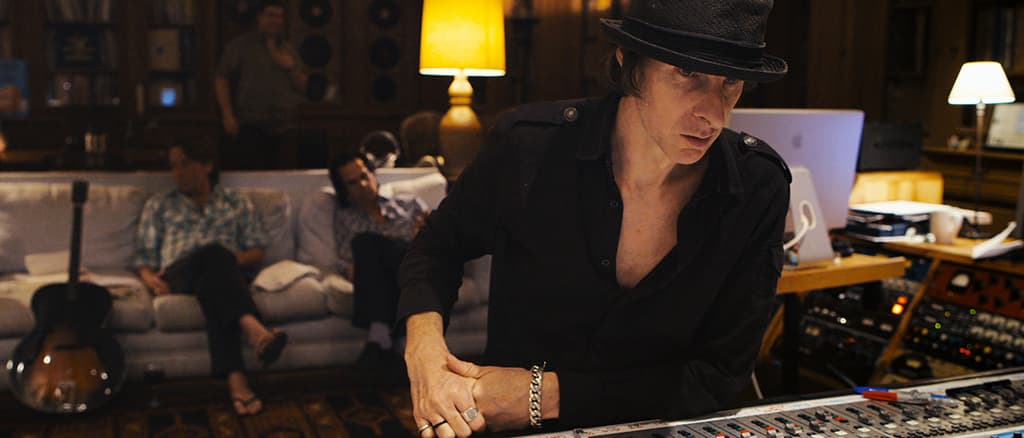

BLACK SEEDS GET SEEDY
The La Fabrique sessions began on June 24, 2012. And two weeks into the three-week booking, Launay said they had essentially finished their work. They spent the last week trying different things, but deep down it was mostly an excuse to spend a few more days in the studio’s idyllic surroundings! On July 15th they loaded any rented gear from the UK into the truck and drove back north. Everyone took a break for one and a half months, after which Launay began to mix the record at Seedy Underbelly Studios in Los Angeles, a place he rents from a friend for up to eight months a year. Seedy Underbelly is a tiny studio filled to the brim with Launay’s favourite gear, including a late ’80s 32-channel API Legacy desk and Adam P22 monitors.
“I’ve mixed almost every album I’ve done in the last 12 years at Seedy Underbelly,” explained Launay. “The desk is pretty much identical to the ’70s API desks, which may sound a little rounder and warmer, but not by much. API desks are relatively simple and the electronics are very similar. They sound great. I like them because they don’t give me a mushy low end. When I record an album on a Neve and also mix it on a Neve, it ends up so fat-sounding that it gets too big and flabby and you end up EQ-ing things during mastering. So I prefer to mix on an API. The one at Seedy Underbelly has Uptown automation that runs on a Windows 98 computer. It’s very basic mix automation, but I like it. It does what it needs to do: move the faders up and down and cuts, and you can store your mix. What more do you need? I love my Adam P22 monitors. I have a pair in Seedy Underbelly, and a pair in the UK I took to La Fabrique. I used to work on Yamaha NS10s, but I found they sound too harsh when working with ProTools, which prompted me to look for speakers you can listen to at high volume all day long without getting fatigue. The P22s have ribbon tweeters that help a lot.
“Warren and Nick came over to LA to mix the album at Seedy Underbelly. The way we worked was I’d go in one or two hours before them, and I’d set up a basic mix, then they’d come in with fresh ears and give their comments, and I’d take it from there. Most of the mixes at Seedy Underbelly were very quick, usually taking between five to six hours for each song, after which I’d spend time laying down the various mix takes and stems. My mix process is I first get a basic balance of the entire song, and then EQ and compress things to make them work together, while doing minimal fader movements and only very rarely solo-ing. I find that your mixes flow better and sound more natural that way. It’s different from the days when I mixed on SSLs. I would solo certain sounds, like the kick or snare, and then would put the whole thing together, hoping everything would fit — sometimes it didn’t!
“What I do very often, and with this album in particular, is that once I get the mix to a place where I feel that it is pretty good, I will listen to the rough mix again. Many of the rough mixes I did in France were really vibey. They were very simple, but really worked, so I didn’t want to stray too far from them. Instead I’d just try to improve on the rough mixes a little bit. In fact, there are two songs on this album that are the rough mixes I did at La Fabrique: We No Who U R and Push The Sky Away. These rough mixes had a magic that I can only describe as: they were distorted in a really good way!’ At Seedy Underbelly I added new backing vocals to the rough mix of We No Who U R, and also mixed in a bit of a loop by Warren that sounds a bit like a space ship. I obviously couldn’t recall the La Fabrique mixes, because they had been done on a completely different desk, but I will very often take photos of the desk for reference of a rough mix and refer to these.
“My main gear at Seedy Underbelly consists of eight Neve 1081s and eight Neve 1073s and compressors like the ELI Distressor, and Drawmer noise gates, an EMT 140 plate reverb, a Furman spring reverb — which is pretty cheap, $300, mono, and sounds like a guitar amp reverb — and a Roland RE301 tape echo, which was a major part of the sound of this album. I have all the outboard I use for mixing more or less permanently wired into the board, and lay the mix out so the kick is always on the same channel, and the snare, and so on. I didn’t actually use many effects for the mixes on Push The Sky Away. It’s quite a natural-sounding album. There are a couple of tricks I always use, like a gated Sansamp PSA-1 on the kick drum and I like to compress the snare a lot with a Distressor. I usually have the snare uncompressed on one channel and I’ll compress it on another channel that I will dull down so the hi-hat spill doesn’t pump unnaturally, and I’ll mix that in with the uncompressed snare. So I use the compressed snare sound for low midrange and low end and the non-compressed snare for the top end.
“Because Warren used loads of pedals, most of the effects were already in the sounds. So all I did was add a little Furman spring reverb, EMT vintage plate or a slap back echo from the Roland RE301. I used the same effects on the vocals, as well as the dual Tube-Tech LCA 2B compressor. I’ll also compress the room mics a lot. The Urei 1176 is really good for that because it adds quite a lot around 2-3kHz and also distorts in that area, which makes the effect very exciting. But because you can lose a bit of low end and get these exaggerated high-mids they’re not as good for vocals, because they tend to bring out the ‘ess’-es. Instead I’ll often use the Tube Tech CL1A on vocals, which is modelled on the 1176 but it doesn’t have the mid-range boost. It sounds very warm and works great on Nick’s vocals.”
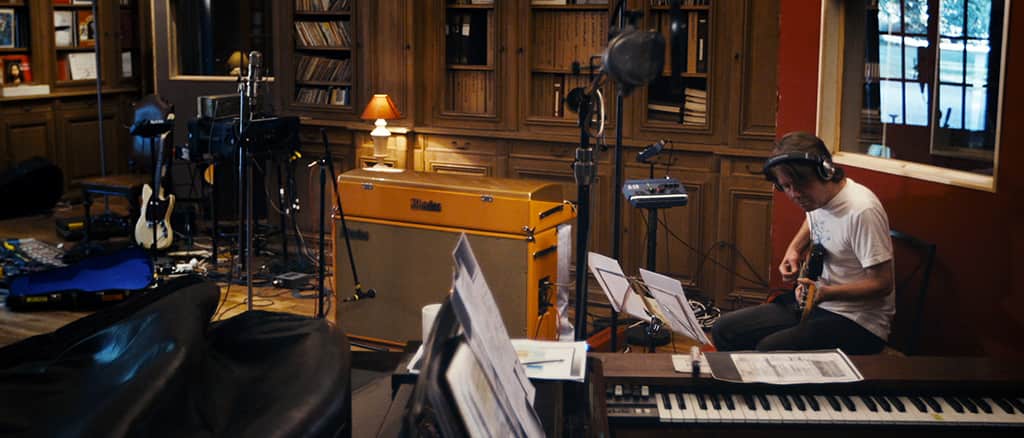


MEAT IN THE MIDDLE
Launay is proud to declare that he uses a hybrid of analogue and digital gear in his work. “I use analogue and digital absolutely 50/50, and I am very happy with that. There are things I can do in ProTools that I could never do in the analogue domain, particularly very detailed things and problem-solving. I basically do all the broad strokes in analogue, on the desk using the faders and with outboard, and detailed adjustments in ProTools before it goes out to the desk. But on this album I also used several plug-ins for controlled digital distortion, like the SoundToys Decapitator on bass, and sometimes on the vocal, as well as on Warren’s stuff. In the past I’d use compressors like the Gates on the kick drum, but I found the Decapitator pretty much captures all these things. It has five buttons that allow you to change the tone and to find the best harmonic distortion for the sound.
“In addition I also used the EchoFarm plug-in a lot, which emulates vintage echo machines. I’m a bit worried that ProTools 10 doesn’t support TDM anymore, and EchoFarm is TDM only. I also use the Waves DeEsser, which is amazing. De-essers compress a certain frequency in a very narrow bandwidth, so you can also use them to get rid of low booms and other sounds, so I use de-essers to get rid of all kinds of sounds I don’t like. I also often use the ProTools EQ3, as a notch filter. It doesn’t do much sonically — i.e. it doesn’t make the sound warmer or colder — but it’s a great tool to boost or cut very specific frequencies. The SoundToys Crystallizer is another favourite plug-in, as well as the Devil-Loc, which is great. I do a lot of controlled distortion! And I use the Waves Expander/Gate a lot.
“The stereo mixes went through two EAR compressors, and then two Neve 1081s, with which I added a bit of top and bottom and sometimes a bit of 2kHz, just brightening up the mix and making it thicker. The mixes went back into ProTools via Lavry AD 122-96 converters. I also use a Lavry digital clock, because the main problem with ProTools is the clocking. So all the above is how I make up for not using analogue tape! The other reason for no longer mixing to ½-inch tape is that mixing stems back into ProTools allows me to adjust my mixes afterwards. For example, we may have chosen Mix 4, but then I might decide there’s one section where I want the snare a bit louder. So I just get the snare stem and feed that in, or if I want the snare less loud, I’ll put the snare stem slightly out of phase so it subtracts. You could never do that before. Using ProTools allows me to have my cake and eat it!
“I’m still not 100% happy with the sound of ProTools, even though 24-bit/96k is a big improvement over 44.1k or 48k. I recorded Push The Sky Away on 24/96, but the reality is that 80% of people will end up listening to the album on MP3. That may be sad and frustrating, but it’s the truth. So as long as I am happy with the warmth and the feeling of my mixes, in part because I use a lot of analogue gear while recording and mixing, then I am OK with recording to ProTools and mixing back into ProTools. I could have mixed to ½–inch and then back into ProTools, but it’s arguable whether that would have made any noticeable difference to the sound. More often than not, all it ends up doing is cutting off the transients, and you end up trying to get them back during mastering, using EQ. You can easily go round in circles, and in the end it’s better to simply accept that people listen on MP3 or, at best, at 16-bit/44.1k. So I use ProTools, and every trick in the book I have learnt over many years to make my recordings and mixes sound as good as possible. I think I managed to make Push The Sky Away sound pretty analogue, despite the fact no analogue tape was used. I am really satisfied with the way it came out. It’s interesting that the album has struck a chord with so many people. It’s nicely surprising, and it also gives us hope!”



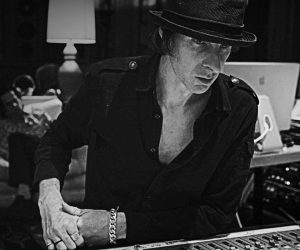






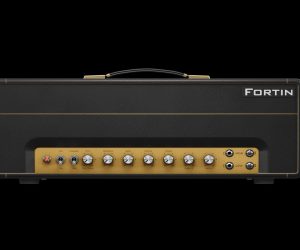

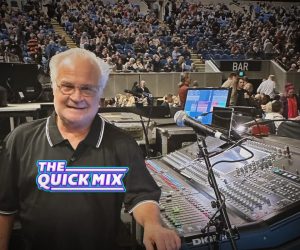



RESPONSES